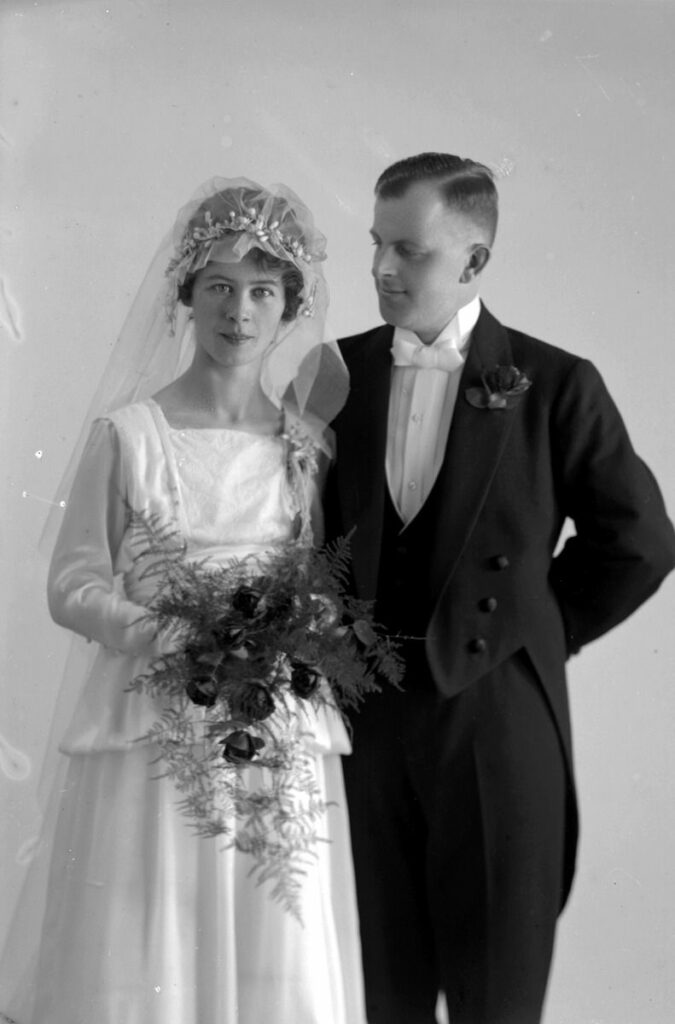
How to store photographs correctly is an important question. It is particularly important when trying to keep old family photos in decent shape. In today’s digital world the storage needs for images is vastly different from those of a traditional photo. Take the first images created in the early 1800’s. These images were on a polished silver or glass sheet. Therefore, they have unique needs, different than a modern photograph. Despite their differences most photographs have similar handling and storage needs. Also, there are three very damaging conditions for photo images. Avoid these conditions when storing photos of any kind. The conditions are direct sunlight, moisture, and extreme temperature changes. These all will cause damage to your stored photographs. How to store photos correctly depends on the type of photo it is.
First, let us look at how to safely handle a photograph. When handling photographs of any type be sure to have clean dry hands. Do not touch the image. Use cotton, lint free gloves for the best protection. It is best to handle photos by their edges. Particularly because the natural oils in our fingertips will break down the photograph over time. Likewise, keep food, drinks, and children away from the images.
Next, there are some general things you can do to protect an image. For example, use a number 2 pencil to write information on a photograph. Markers and ink pens will bleed through the image over time. Also, the chemicals in the ink will damage the image. Number 2 pencils are graphite and will not bleed though to the image and will last forever. Then protect the image in an acid free sleeve and store where the temperature and humidity are controlled. Climate Controlled Self Storage is an ideal solution for photograph storage.
Types of Antique Photos and How to Store Them:
Daguerreotype (/dəˈɡerəˌtīp/)
From 1840 until 1860, these photos were popular. The mirror-like image is on a polished silver sheet. These photos are small, typically 2.75 inches by 3.5 inches, with a protective case. They are fragile and should not be exposed to direct sunlight. Direct sunlight and extreme temperatures will cause damage. Therefore, climate-controlled storage is best for these photos.

Ambrotype (ăm′brō-tīp′)
From 1855 until 1865, brought the popularity of the Ambrotype photograph. The image is created on a glass sheet instead of the polished silver sheet. The other difference is that they do not have the mirror-like reflection. Plus, they are kept in a hinged case. Climate controlled storage is recommended because these images are fragile.

Tintypes (ˈtintīp)
1855 until the 1900’s, tintypes were popular. They were on iron plates instead of glass or polished silver sheets. Tintypes were durable which is why they were popular for over 30 years. The tintype started out with hinged cases but soon were kept in paper sleeves or envelopes. They had delicate surfaces that could scratch easily.
Cartes des Visites (kärt də vēˈzēt)
From 1859 through 1870, Cartes des Visites was in demand. Cartes des Visites are albumen printed and mounted on thick paper. Albumen printing is egg white and silver nitrate spread on a paper. This forms a light sensitive layer. A glass negative is put on the paper and light is cast over the image. These were popular during the Civil War.
Cabinet Cards
From 1860 through the early 1920’s, cabinet cards were the photograph of choice. They were larger than the Cartes des Visites. Although, the images were created the same way, stiffer cards were used. This allowed the photographer’s information and advertising to be applied to the back.
In 1900, Kodak introduced the first camera to be sold to the public. This changed photography, it became a popular hobby for many. With this change came another challenge on to how to store photographs properly.
How to Store Modern Photographs
After the introduction of the Brownie Camera photography equipment and technology changed quickly. One thing that has not changed is the process to protect them. All the rules above still apply today to any printed photograph. With the introduction of photo albums and scrapbooks came a new threat to photos. Many of the papers or sleeves used were not archival safe. The glue in the photo corners used to secure photos to the paper caused damage. Over time better acid-free paper and photo safe glues were developed. Therefore, when shopping for an album or scrapbook check that it is acid-free. Protecting photos before storage is as important as when they are being stored.
First let us look at storage solutions. Today there are a lot of storage containers for photos. Acid-free boxes, plastic totes, photo albums, and scrapbooks to name a few. As mentioned above, be sure to check that all options are archival safe. The last thing anyone wants is to accidentally ruin photos in storage because the wrong method was chosen.
Next, is the proper way to store pictures in their box. Standing the photo up protects the image. Stacking the images one on top of the other causes warping and the images to stick together. Standing keeps them safe from warping over time. If the box cannot be filled so everything is standing, use a filler to keep them on their edge. If you must stack the images, only stack a few on top of each other. Always keep the negatives with the photos if one becomes damaged it can easily be replaced. Hint: using an acid-free index card as a divider helps keep the images organized and protects them from sticking together.
Last, knowing light, moisture, and temperature all cause damage over time, choosing the best location is important. The attic is not a good place due to the wild temperature changes that happen. Likewise, the basement will have moisture issues. A closet inside the house will work but the best option is climate-controlled storage. Climate-controlled storage is kept within the correct temperature and humidity range. In other words, to protect your photos choose climate-controlled storage.

How to store instant/polaroid images.
As photography advanced along came the instant photo. It was wildly popular because you had your image instantly or within a few minutes. The film came coated with the chemicals needed to process the image. This presented a different problem because the chemicals could dry out over time. It was recommended to refrigerate the film to slow down or prevent this from happening. Freezing the film did not extend the life of the film instead it caused the chemicals to crack inside the film. Once the picture was taken it slowly developed. The colder the film was when the photo was taken, the better the quality of the picture was after it developed. The cold film slowed down the chemical process.
Correct storage of these instant images was important to maintaining them. It soon became apparent that light and heat where the biggest dangers. Heat and sunlight caused the images to warp and change color. If left exposed to these conditions long enough the image would disappear from the photo. Therefore, the ideal storage is in an album or upright in a box protected from light and heat. A dark closet or a climate-controlled storage unit are the best options for storing instant photos.
How to Store Digital Photography
In 1990 an innovative technology joined the photography family. Digital photography debuted and took the world by storm. Within ten short years it was on every cell phone. This put a camera in the hands of 7.26 billion people worldwide today. With the development of digital images, no longer did you have to wait for the film to be developed. The image was available instantly. It did not cost anything to develop it nor to share it. They could easily be manipulated with photo editing software to create stunning images.
This overabundance of images held its own issue. How do you store so many images safely? First, each device has a storage card. It was easy to download the images onto a computer for safe storage. But was it truly safe? Computers can die and with it all your important photos. As a result, hard drives separate from the computer were developed. Now you could download all the thousands of photos onto an external hard drive and keep them safe.
Next, there are many thoughts on the proper storage of digital images. One such rule is to keep the original SD card from the camera or phone. Use the little tab on the side to lock the card so it cannot be overwritten. This can be expensive if you take hundreds of pictures a day. Therefore, the next rule might work best for you.
Second method is to download the images onto a computer. Organize them, then copy them onto the external hard drive. This method works best if you take many pictures every day. The thought is if you lose the SD card, the image is on your computer. If the computer dies the image is safe on your external hard drive.
Lastly, if every image is not a keepsake for you, choose the best image or images of the day. Then delete the others. Have the best image printed or developed. Then download the images onto your external hard drive. Display your best or store them with the external hard drive. This brings up a good question, where is the best place to store an external hard drive?
External hard drives have a few enemies. The number one is static with moisture being a close second. Store external hard drives in an anti-static storage bag. Once in the bag they can be stored anywhere. The only exception is if you are storing an original with the hard drive if so, choose an appropriate location for the safety of your original.

Summary
As seen photography has been popular for hundreds of years. Therefore, preserving the images across the ages is important. Keeping all forms of photography safe is important for having images to show to future generations. The best option is climate-controlled storage to preserve the past for future generations.
Recent Comments